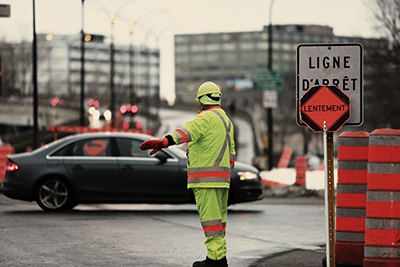Casella UK
Wolseley Rd, Kempston,Bedford MK42 7JY
+44(0)1234844100
info@casellasolutions.com

The barriers and uncertainty felt when treating workplace health and safety as a joint entity is increasingly becoming a problem of the past. Lawrence Waterman, founding partner of the Park Health and Safety Partnership and former head of health and safety for the London Olympic Delivery Authority, changed the meaning of the phrase forever when he approached health and safety processes together within the Olympic Park construction project. The project of building the sporting complex for the 2012 Summer Olympics and Summer Paralympics, employing 80,000 with 80 million man hours finished with zero fatalities; the first time ever for an Olympic construction project.
In presentations since, including at a British Safety Council Event, Waterman detailed the rationale behind his approach of putting the same emphasis, time and handling on health management as safety. This process involved planning the work with health in mind - from the initial risk assessment process to site monitoring, developing worker/supervisor understanding, and demonstrating how actions help to drive wider standards.
Waterman contextualised the issue, recounting first hand experience of where health was regarded as difficult to understand and manage, with immediate causes not obvious. “Put simply”, he said, “ it was always meant to be health and safety”. Treating both with equal importance improves life expectancy and quality of life, creates healthier workers that will be more productive, and elevates business reputation and legacy.”
It seems Waterman’s approach has truly caught on; with many organisations implementing a similar approach in key sectors, including construction. The HSE’s #HelpGBWorkWell scheme that launched in 2016 is a further testament to the success and support this new approach has garnered, with health as the focus and salient points in the strategy highlighting ill health costs, aligning this to risk management and owning the topic of health more than ever before.
Coinciding with this is the continuing permutations of professional job titles in our industry that not only link health and safety together, but expand to quality, environment and wellbeing- demonstrated in QESH, or SHEQ job titles. Health and safety as a remit is only getting bigger.
Control needs from a collaborative perspective – bringing in environmental, wellbeing and other elements on top of the traditional health and safety agenda – was demonstrated internationally with the Gibraltar International Airport project. This project, involving the construction of a road 1.24km long, with two lanes in each direction, whist keeping the land border open at all times, connecting Gibraltar to mainland Spain
Environmental Manager for the project, Lucia Diez Cadavid used environmental monitoring processes that ultimately changed health and safety measures, utilising the data gleaned to make the workforce healthier and safer, including the introduction of screens, face masks, and sprinklers – all elements that fell under her role and responsibilities.
A 2004 study conducted by the HSE found employers considered health and safety to be a generic phrase where individuals were unable to distinguish between the different types of risk concerned. We are much further forward then this now, and the remits of a health and safety professional are wider than ever before, utilising other areas of knowledge and skills. As the wellbeing trend continues to gather momentum and workplaces and employers realise the true benefits of an integrated approach; traditional “health and safety professionals” can look forward to the future.